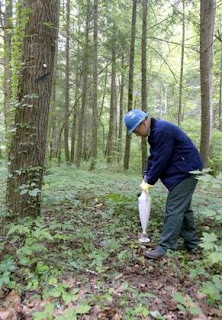The payroll tax cut extension that became law this week contained some other goodies, including a measure that could encourage development of broadband in rural areas. It opens up the frequencies between the old analog television channels, known as "white space," to unlicensed wireless Internet services. "Since rural areas have fewer TV stations, opening up white space could prove a boon to rural wireless Internet providers, which have struggled to provide service using a more robust version of Wi-Fi," reports Brendan Greeley of Bloomberg Business Week.
Greeley writes that a Federal Communications Commission spokesman told him "several companies are developing devices that carriers could use to deliver broadband data using white space." One such device is already in use in Wilmington, N.C., linking security cameras and providign Wi-Fi in public parks. White spaces make it easier for rural carriers to provide service because “the unlicensed frequencies available today can be stopped by a single leaf,” says Forbes Mercy, vice president of the Wireless Internet Service Providers Association." (Read more)
Greeley writes that a Federal Communications Commission spokesman told him "several companies are developing devices that carriers could use to deliver broadband data using white space." One such device is already in use in Wilmington, N.C., linking security cameras and providign Wi-Fi in public parks. White spaces make it easier for rural carriers to provide service because “the unlicensed frequencies available today can be stopped by a single leaf,” says Forbes Mercy, vice president of the Wireless Internet Service Providers Association." (Read more)












